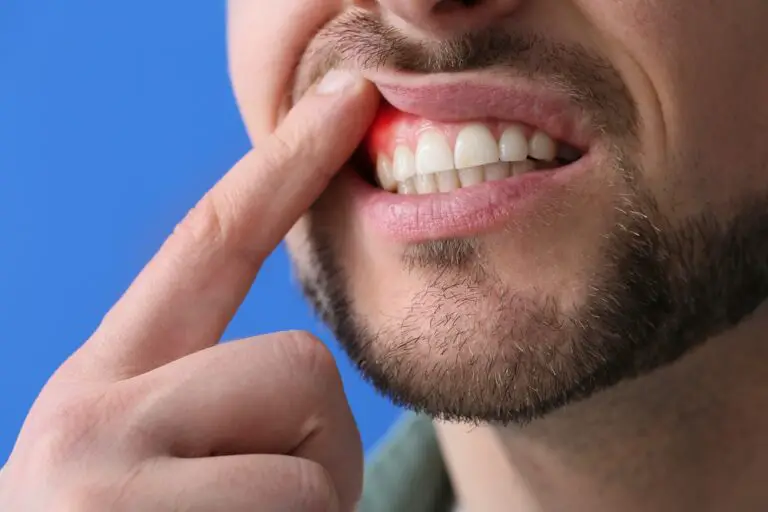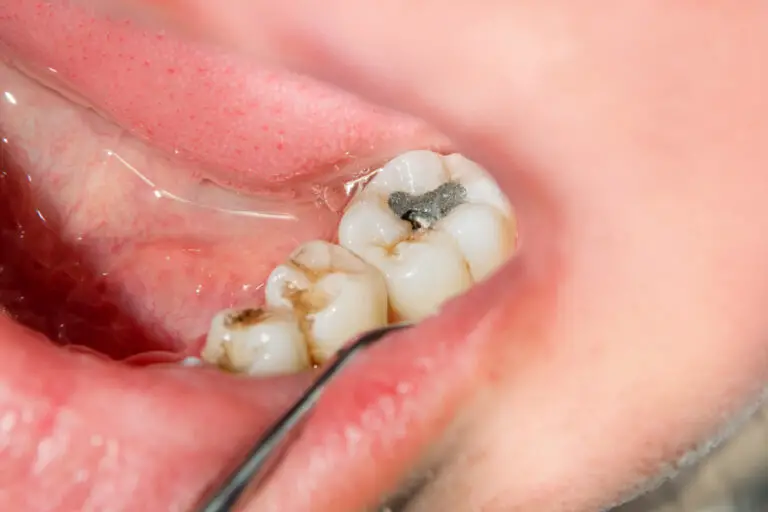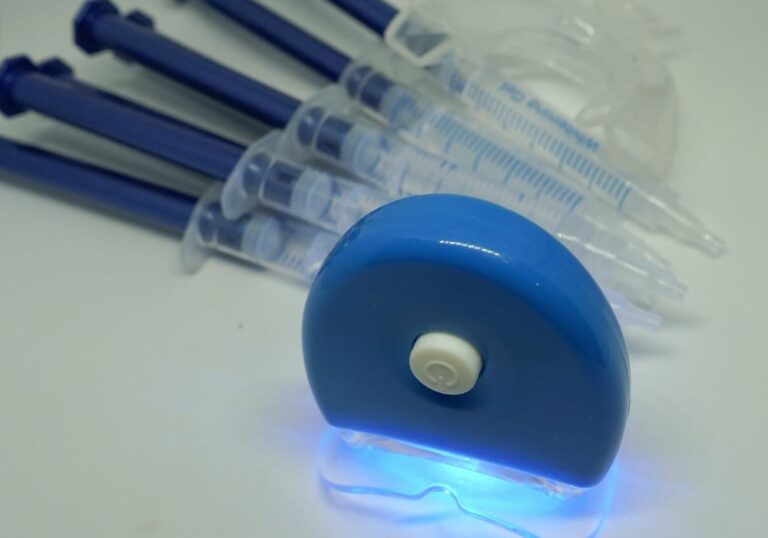Determining whether someone’s teeth are natural or artificial can be very challenging. Modern dental prosthetics like crowns, veneers, bridges, and dentures are made to closely mimic the appearance of real teeth. Only on very close inspection can you discern the subtle differences that reveal fake teeth.
This comprehensive article will provide an in-depth examination of the distinguishing characteristics of natural teeth versus dental restorations. We’ll look at the intricacies of tooth structure, coloration, light reflection, placement, movement, wear patterns, texture, maintenance needs and more. You’ll also learn the typical traits of different types of dental appliances and how dentists use technology to identify prosthetics.
The anatomy of natural teeth
Real teeth have a complex internal and external anatomy that’s important to understand when comparing to artificial teeth:
Enamel
- Enamel is the outermost layer of the tooth. It’s translucent and semi-clear with a glossy appearance.
- The color of enamel ranges from light yellow to grayish white with subtle variations across the surface.
- Under a microscope, fine horizontal striations are visible on the enamel surface. These are subtle linear grooves formed as the tooth develops.
- Enamel is hard and dense but slightly porous. It’s softer near the gum line and neck of the tooth.
- The thickness of enamel varies from 2.5mm on molars to under 1mm nearer the tooth edge. It’s thickest at the cusps and thins toward the biting edge.
Dentin
- Dentin lies beneath the enamel coating and makes up the bulk of the tooth’s structure. It has a yellowish tint due to its higher organic content.
- Since enamel is translucent, the color of the underlying dentin impacts the overall tooth color. The dentin adds a subtle yellowish hue to the visible enamel.
- Dentin contains thousands of microscopic tubular structures passing from the pulp chamber outwards. These microtubules are filled with fluid and nerves.
Pulp chamber
- The pulp chamber lies in the center of the tooth and contains soft tissue called the dental pulp. The pulp provides nourishment and sensory nerves to the tooth.
- In healthy teeth, the pulp chamber is visible as a darkened area when transilluminated or viewed on dental x-rays.
- If the pulp tissue becomes infected, the chamber may appear less defined as it fills with pus and abnormal tissue.
Cementum
- A thin layer of bone-like cementum covers the dentin surface of the tooth root beneath the enamel. Cementum contains elastic fibers that allow attachment of periodontal ligaments.
Periodontal ligament
- The periodontal ligament is a group of connective tissue fibers that surround and attach the tooth root to the bony socket. This anchors the tooth in place within the jawbone.
This complex internal and external anatomy allows natural teeth to function properly for biting and chewing while remaining anchored within the jaw. Artificial teeth lack these intricate organic structures.
Comparing natural and prosthetic tooth structure
There are notable structural differences between natural teeth and dental prosthetics:
Enamel coatings
- Natural enamel is semi-translucent with subtle variations in color shading and a yellowish tint.
- Enamel has a layered depth with increasing translucency nearer the pulp chamber.
- Prosthetic enamel is more opaque and uniform in color. Crowns and veneers lack natural light translucency.
Underlying dentin
- The yellowish dentin beneath natural enamel impacts the overall tooth color.
- Fake teeth appear more monochromatic since the opaque enamel coating blocks light from penetrating to lower layers.
Pulp chamber
- Real teeth have a visible central pulp chamber when radiographed or transilluminated.
- Artificial teeth lack an internal pulp cavity since they are non-living constructs.
Shape and contour
- Natural teeth have rounded contours and irregular shapes with structural layers.
- Fake teeth tend to have less modeling and be overly uniform in shape and size. They lack natural irregularities.
Tooth arrangement
- Real teeth are aligned closely but have minor imperfections in positioning. There are small gaps between most teeth.
- Artificial teeth used in dentures and bridges often appear perfectly straight and spaced without natural flaws. The prosthetic fit seems unnaturally precise.
| Natural Teeth | Fake Teeth | |
|---|---|---|
| Enamel | Translucent with variations in shade/color | Opaque and monochromatic |
| Pulp chamber | Visible central cavity | No pulp chamber present |
| Contours | Modeled layers and uneven shapes | Flat and uniform dimensions |
| Tooth alignment | Natural small gaps and imperfect positioning | Perfectly aligned and spaced |
This table summarizes the main structural differences between natural and prosthetic teeth. The artificial constructs lack the complex anatomy and organic variations of real teeth.
Examining the color of natural versus fake teeth
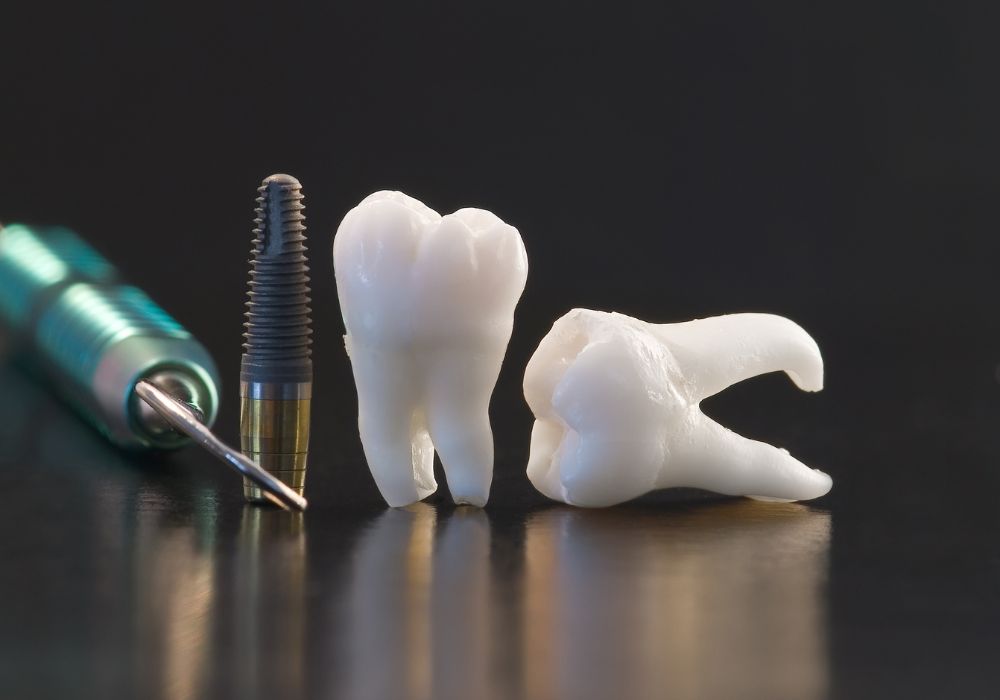
The coloration and shading of teeth can reveal vital clues about their authenticity:
Natural tooth color
- Enamel ranges from off-white to light yellow in color with subtle variations across the tooth surface.
- Staining and translucency of enamel increase nearer the gum line as enamel thins.
- The yellowish dentin beneath the enamel impacts the overall tooth color with a subtle warm tinge.
- The pulp chamber appears as a darkened area near the center when viewed from the biting edge or back.
Prosthetic tooth color
- Crowns, veneers, dentures often appear too white and brightly uniform in color with no natural variations.
- The artificial enamel completely blocks light, preventing color from the underlying material layers affecting the visible shade.
- Without a real pulp chamber, fake teeth lack the darker center spot seen on natural teeth.
- Staining and discoloration are also absent near the edges and contacts of prosthetic teeth.
Natural imperfections
- Real teeth have minor developmental imperfections and uneven staining that adds character.
- Enamel gradually accumulates plaque, tartar, and subtle stains over time that can’t be completely removed. This creates a patina effect.
Fake perfection
- Artificial teeth are manufactured perfectly with precise dimensions, contours, and color uniformity.
- The artificial enamel of prosthetics emerges from the mold completely smooth, glossy, and free of imperfections or wear.
The ability to mimic natural subtle color shading, depth, and imperfections continues to improve with modern dental materials and fabrication techniques. But prosthetics still tend to appear too uniform compared to natural teeth with their inherent organic variations.
Comparing light reflection
The way teeth interact with light can also reveal if they are fake:
Natural light reflection
- Natural enamel has a glossy translucent appearance that reflects light gradually off the various enamel depths.
- Light reflection increases closer to the pulp chamber as the enamel thins and refractive index increases.
- The varied contours and irregularities create localized differences in light refraction.
Prosthetic light reflection
- The opaque artificial enamel of crowns and veneers lacks depth and translucency.
- Light reflects off the prosthetic surface abruptly and evenly across the tooth with no variation.
- The uniform convex shape lacks natural contours that influence localized light refraction.
Surrounding integration
- Natural teeth have light reflectivity that blends smoothly with adjacent teeth.
- Fake teeth often have light reflection that appears mismatched from neighboring natural teeth. Their brightness seems oddly inconsistent.
As dental materials become more lifelike and layered to mimic enamel translucency, the light reflection continues improving. But there are still subtle differences compared to natural teeth with their myriad depth variations affecting light refraction.
Evaluating tooth mobility
Assessing how teeth respond to pressure can indicate if they are real:
Natural tooth mobility
- Natural teeth have a normal, slight degree of mobility within the jawbone socket.
- They can be rocked slightly in place by about 50-100 microns with light finger pressure.
- Mobility is enabled by the periodontal ligament fibers surrounding the root.
Fake tooth mobility
- Artificial teeth used in dentures and bridges are fused permanently to the prosthetic base. They are completely immobile.
- Applied pressure causes no movement or rocking. The fakes remain rigidly fixed in place.
- With dental implants, the titanium post is rigidly fused to the jaw so mobility is also absent.
Measuring tooth mobility requires some experience to distinguish normal, healthy movement from pathological looseness. But the total absence of mobility is a definitive sign of prosthetic teeth fused into a bridge or denture structure. Their rigidity differs distinctly from the slight natural movement of real teeth.
Evaluating wear patterns
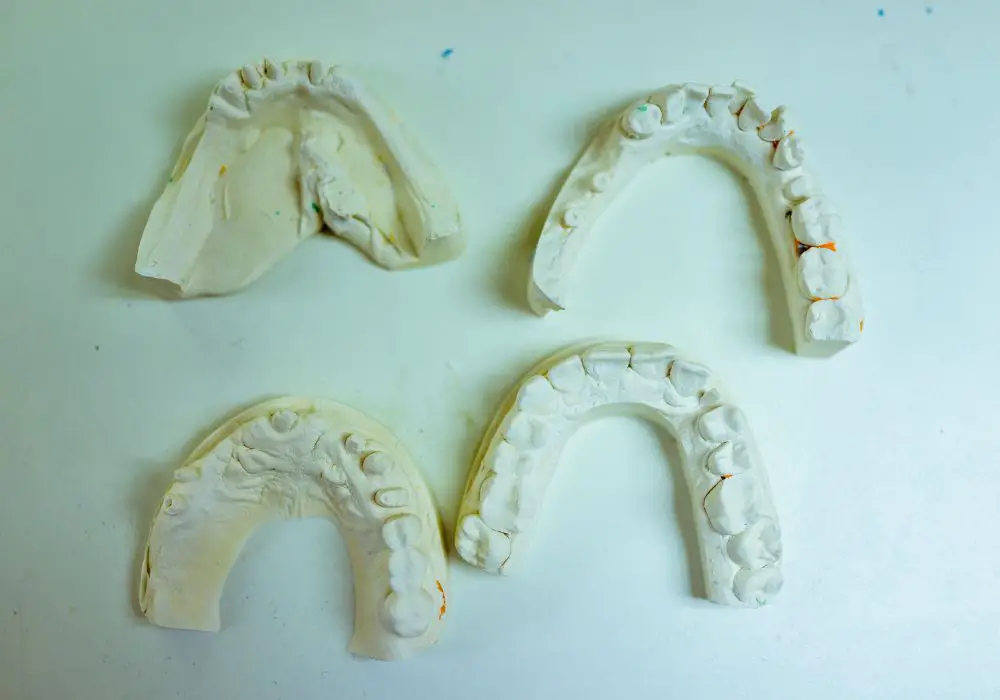
The wear and aging patterns of teeth can indicate if they are natural or artificial:
Natural tooth wear
- Enamel slowly erodes from chewing and acid exposure leading to gradual uneven wearing. The biting edges flatten and thin over decades.
- Abrasion from brushing, grinding, and diet create localized enamel loss making the surfaces slightly uneven and roughened.
- The neck of the tooth near the gum line often exhibits the most erosion and thinning.
Fake tooth wear
- Prosthetic teeth maintain their original pristine enamel integrity since they are non-living constructs.
- No erosion, thinning, abrasion, staining or other wearing accumulates despite years of exposure. Their enamel remains factory-smooth.
Relative wear
- Natural teeth exhibit more wearing than nearby crowns, veneers, or dentures which remain flawlessly intact. Their lack of proportional aging becomes apparent.
The gradual wearing of natural teeth is challenging to mimic in artificial teeth. Their undamaged perfection despite years in the mouth can seem unnatural compared to the aging visible on surrounding teeth.
Examining tooth texture
The surface texture of teeth provides additional clues to their authenticity:
Natural tooth texture
- Natural enamel has a smooth glossy texture but under magnification shows a finely irregular, organic surface pattern.
- Areas of enamel erosion create localized roughness that can be felt by probing with a dental tool.
- The enamel surface develops an accumulation of plaque, tartar, and subtle extrinsic staining over time.
Fake tooth texture
- Artificial crowns and veneers retain a homogeneous smoothness and factory gloss perfection across the enamel surface.
- No natural pitting, etching, or structural imperfections are present. The surface feels evenly smooth.
- Fake enamel resists plaque accumulation and staining over time. No tartar or discoloration develops.
Again, the natural imperfections and gradual wearing of real enamel are difficult to accurately reproduce in artificial teeth. Their eerie smoothness and resistance to aging provides telltale texture differences.
Considering maintained appearance
The maintenance needs and aging details of teeth can indicate if they are fake:
Natural teeth needs
- Biological teeth gradually accumulate tartar, plaque, and extrinsic stains on the enamel requiring removal via regular hygiene visits.
- Ongoing dental care is needed to treat decay, worn dentin, gum disease and other natural consequences of aging.
Fake teeth maintenance
- Prosthetic teeth maintain their original color and gloss with little home or dental care needed. Their artificial enamel remains free of tartar, stains, and decay.
- The fake teeth only require periodic re-cementing or bonding if fixed in place. Removable dentures or partials just need cleaning.
- Implants fuse permanently to the jawbone so display no signs of detachment that require adjustment.
The lack of biological aging processes in prosthetic teeth means they resist plaque, tartar, decay, and deterioration seen in natural teeth. Their unchanging perfection despite years in the mouth can seem unnatural.
Looking at tooth placement and spacing
Examining how teeth are positioned and spaced within the smile can reveal signs of prosthetics:
Natural alignment
- Natural teeth are generally well aligned but have minor rotations, gaps, and overlaps. Imperfections are almost always detectable.
- Spacing between most teeth is present with occasional tight contacts. The middle and chewing surfaces exhibit more malalignment.
- Gaps from extraction sites may be maintained or closed orthodontically with residual spacing irregularities.
Fake alignment
- Dentures, bridges, and dental implant restorations often have perfect uniform spacing and zero gaps between teeth.
- The artificial teeth are precision manufactured and positioned for ideal alignment. Their placement seems eerily perfect.
- Veneers can also create unnaturally even, straight teeth since bonding material fills any spaces.
Gum line height
- Natural gum lines aren’t perfectly straight or symmetrical. There are slight variations in height around individual teeth.
- The artificial gums and teeth of dentures often form a perfectly uniform gum line shaped evenly across the prosthetic.
While modern computer-aided manufacturing allows finely customized tooth positioning in prosthetics, the alignment still tends to appear too perfect compared to natural teeth with their inherent organic variability.
Evaluating interdental contacts
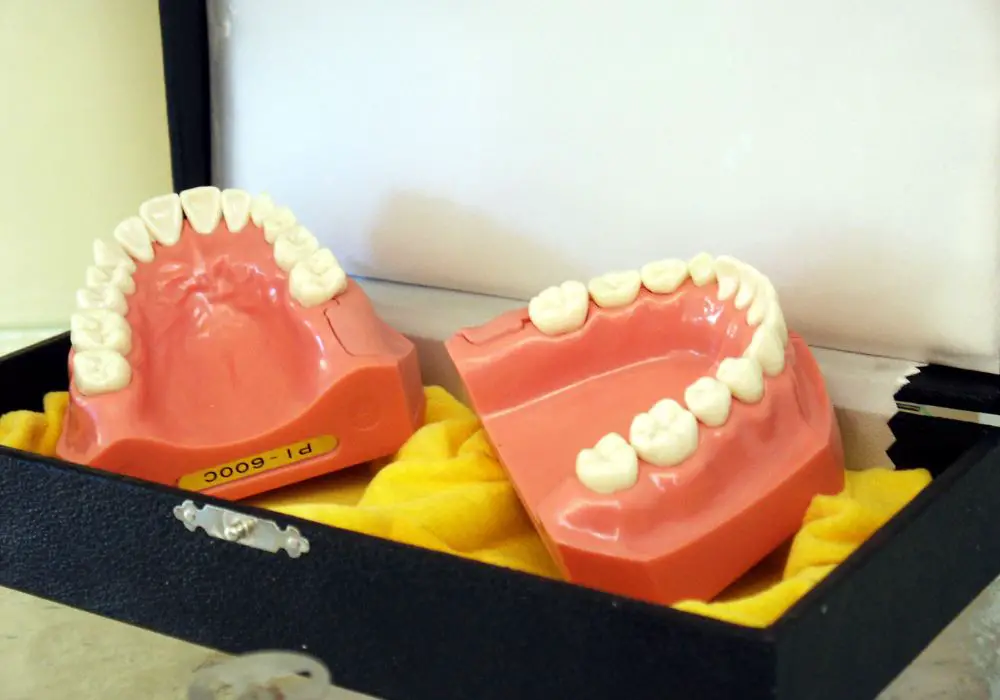
The connections between teeth provide further opportunities to spot dental prosthetics:
Natural contacts
- Adjacent natural teeth touch each other but have no fused connections. They maintain slight mobile independence.
- The embrasure space between teeth appears as an open narrow valley with healthy interproximal gum tissue in the gap.
- Some teeth may exhibit a tight premature contact with no space between them. This is still a minimal connection point.
Fake connections
- Bridges have fused integration between the pontic artificial teeth and supporting crown caps. The solder line may be detectable.
- Partial dentures have visible metal clasping that wraps around abutment teeth to secure the appliance.
- Dental bonding material between veneers can appear as artficial grayish material when examined closely.
Prosthetic teeth used in bridges and partial dentures require physical adhesion to adjacent structures. The material interfaces and bond lines can often be detected on close inspection with dental instruments. This reveals their non-natural integration.
Looking at the tooth and gum interface
The border between tooth and gum also provides clues:
Natural interface
- Natural teeth have distinct delineation between enamel and gingival tissue but the transition is irregular.
- There are slight prominences and recession at different points around the tooth circumference.
- The gingival tissue appears tightly adapted and blends seamlessly into the enamel.
Fake interface
- The transition between prosthetic teeth and gums often appears as an abrupt straight delineation with no natural irregularities.
- With removable appliances, the denture may not fit perfectly flush against the gums, allowing gaps and a visible border.
When artificial teeth emerge from the gums in a perfectly straight uniform line it can indicate a dental prosthetic piece where the teeth and gums are fused together rather than independently integrated biological structures.
Identifying types of dental prosthetics
There are a number of different types of artificial dental replacements and restorations, each with characteristic traits:
Dental crowns
Crowns have these identifiers:
- Appear slightly darker at the bottom edge since they overlay natural tooth stumps which are often discolored or decayed.
- May exhibit a visibly different hue compared to neighboring natural teeth.
- Can have a geometric unnatural shape if placed on a broken or worn tooth with unusual underlying structure.
- May seem opaque relative to more translucent natural enamel.
- Excess cement visible at the crown margins can appear as a greyish line.
Dental veneers
Veneers have these characteristics:
- Look perfectly smooth, white, and flawless since bonding material patches any defects.
- Have thicker bulky dimensions and appear wider from front to back than surrounding teeth.
- Can seem flatter and thinner than natural enamel.
- May exhibit a raised ledge at the gum line from the veneer edge.
- Display absolutely perfect symmetry and proportions without natural variations.
Dental bridges
Bridges may be identified by:
- Visible metal or porcelain joints linking the pontic unit to the crown abutments.
- Pontic teeth that are wider than normal for strength. They may seem oversized.
- Rigidly fused integration of the components with no individual movement.
- Uneven coloring between the bridge teeth and natural adjacent teeth.
Dental implants
Implants have these distinguishing features:
- A uniform gum line since the titanium post fuses directly with the jawbone at the same level.
- No mobility of the metal-anchored implant teeth within the jawbone.
- Implant-supported teeth may seem bulkier or wider than natural teeth.
- The interior of implants appears uniformly dense on x-rays with no pulp chamber since they integrate with bone.
Dentures and partials
Dentures and partial dentures are recognizable by:
- Visible acrylic resin base that denture teeth are fused into. Pink acrylic is often apparent near the edges.
- Even precise spacing and perfectly straight arrangement of teeth.
- Teeth that are smaller than natural to allow thick plastic between them.
- An immobile rigid structure that moves as a unit when handled.
- Clasps or wires wrapping abutment teeth to secure a removable partial.
Dental bonding
Bonding treatment has these possible signs:
- Overly white and perfectly smooth appearance in areas where cavities or cracks were filled.
- Seams visible at the margins of bonded composite material.
- Proximal areas between teeth seem fuller or overstuffed.
- Interdental spaces appear eliminated in areas with bonding agent added.
With knowledge of the characteristics of different prosthetic types, it becomes possible to pinpoint exactly which artificial dental treatments or devices are present.
Using technology to identify dental prosthetics
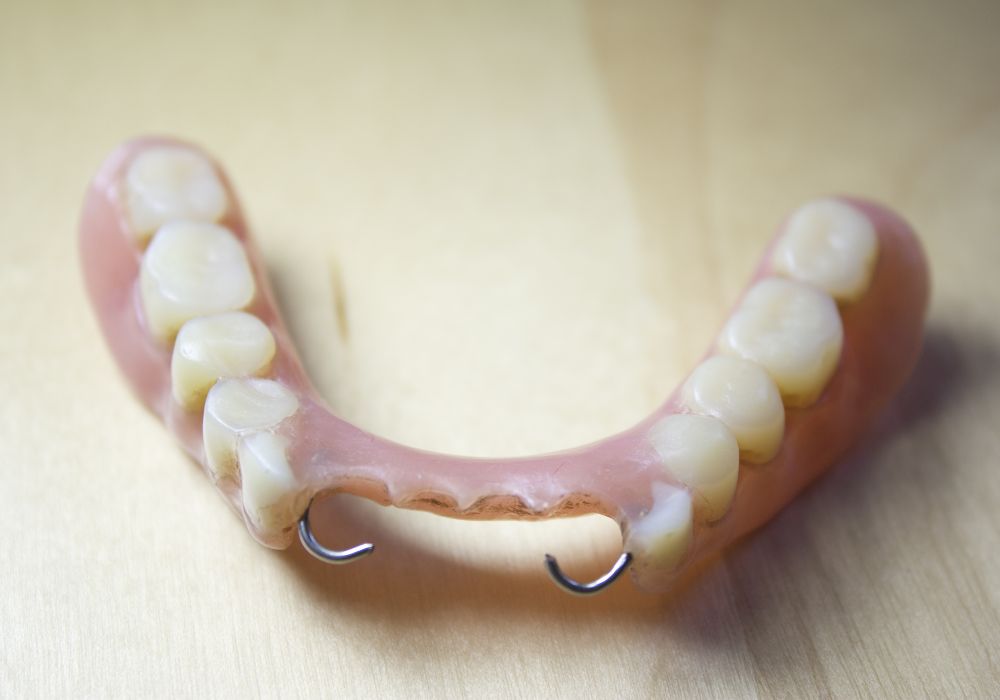
Dentists have advanced diagnostic technology available to help identify artificial teeth:
Radiography
Dental x-rays show distinct characteristics of prosthetics:
- Crowns and bridges appear radiopaque and show uniform dense internal structure.
- Natural teeth have radiolucent pulp chambers and variations in radiopacity.
- Implants fuse with bone so lack a periodontal ligament space. Their metal composition is obvious.
- Dentures are radiolucent with thin radio-dense outlines around the teeth.
Transillumination
Shining light through teeth reveals:
- Natural teeth transmit light gradiently from the biting edge to the darker pulp chamber.
- Crowns and veneers lack depth and internal opacity changes, transmitting light uniformly.
Diagnostic kits
Special dyes, acids, and probes help detect prosthetics by interacting differently with natural versus fake teeth.
Forensic analysis
Bite mark imprints, tooth impressions, and dental records can identify if teeth are in their original natural state or have restorations.
Digital scanning
CAD/CAM oral scanners digitally map dental structures in 3D. Differences in light scatter and surface detail helps identify prosthetics.
Advanced technology now allows extensive analysis and testing methodologies when the naked eye alone can’t determine conclusively if teeth are natural or fake.
Why identify fake teeth?
There are valid reasons for discerning real vs fake teeth:
- Dentists – Proper diagnosis and treatment requires identifying existing dental work.
- Insurance claims – Documentation of tooth replacements may be required for coverage.
- Legal system – Forensic odontology uses dental evidence in court cases.
- Medical history – Presence of dental prosthetics provides insight into a patient’s health background.
- Relationships – Understanding previous dental work helps partners anticipate needed procedures.
- Personal interest – Curiosity over the authenticity of teeth in oneself or others.
How to avoid prosthetic detection?
For those who want to keep dental treatments discrete, consider these tips:
- Select high-end brands that offer realistic customized coloring, layering, and detailing to closely match natural dentition. Avoid obvious “fake” appearances.
- With veneers, request ultra-thin constructions for a subtle look. Multiple shades can create natural depth.
- Use partial dentures rather than full plates to allow some natural gums and avoid a compressed unnatural appearance.
- Seek out experienced cosmetic dentists who excel at creating seamless restorations. Artistry skills impact outcomes.
- Maintain prosthetic teeth well. Letting them appear worn and aged like natural teeth over time will increase discretion.
- Periodically replace old crowns and dentures after years of use so they deteriorate realistically alongside your own teeth.
With careful product selection and ongoing maintenance, it’s possible to keep dental appliances very discrete for those who desire to conceal treatment.
Conclusion
Distinguishing real human teeth from dental prosthetics requires carefully examining the subtle details of tooth structure, layers, coloring, light refraction, alignment, texture, wear patterns, and other characteristics. Modern materials and fabrication methods allow crowns, veneers, bridges, dentures and implants to closely mimic natural dentition. But on close inspection by a trained eye, the artificial nature of dental replacements can be detected. With practice and experience, it is possible to discern the signs that teeth are not original biological structures.
Frequently Asked Questions
What are the most obvious signs of fake teeth?
Some clear giveaways of fake teeth include unnatural uniformity in color, perfectly even spacing with no gaps between teeth, artificial-looking smooth glossy enamel, lack of anatomical layering, and immobility. Prosthetics often appear too white, flawless, and precisely aligned without the imperfections and aging seen in natural teeth.
Can dental crowns be made undetectable?
With modern custom fabrication techniques, it’s possible to create crowns nearly indistinguishable from natural teeth. Matching the original tooth characteristics like color shading, enamel thickness, translucency, and contours goes a long way toward discretion. But differences in light refraction and microscopic anatomy may still be discernible on extremely close examination.
Should you reveal having dental prosthetics?
Whether to disclose having fake teeth is a personal choice that depends on the situation. For close relations where medical history is shared, it can strengthen trust and understanding. Professionally it usually needn’t be revealed unless specifically relevant. There’s no obligation to disclose dental work if you prefer privacy.
How long should dental crowns last?
With proper oral hygiene and regular dental care, high quality dental crowns typically last 10-15 years or longer before needing replacement. Factors like mouth acidity, grinding habits, diet, and maintenance impact longevity. Well-crafted crowns can sometimes last several decades with periodic refurbishment and upkeep.
Can dentists always identify fake teeth just by looking?
Skilled dentists can immediately spot many types of prosthetics on sight. But with modern materials and exceptional craftsmanship, some high-end crowns, implants, and veneers may prove difficult to confirm as artificial during a visual exam. In ambiguous cases, dentists use specialized tests to analyze tooth structure and properties to conclusively determine if teeth are genuinely natural or not.


